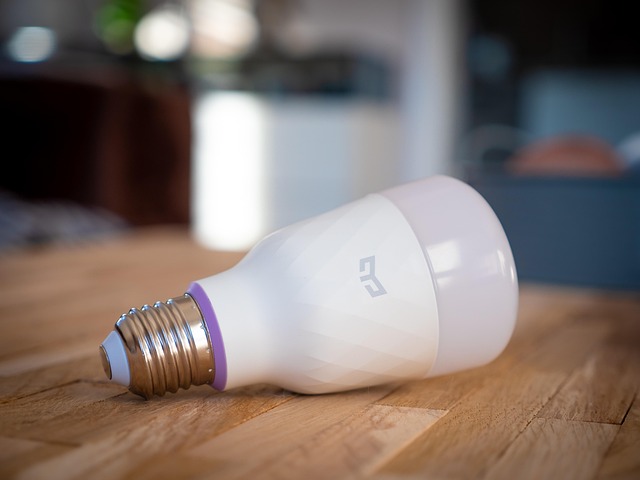Home insulation is a cost-effective, eco-friendly upgrade that enhances energy efficiency year-round. By trapping heat in colder months and preventing hot air in warmer seasons, it reduces heating/cooling bills and improves indoor comfort. Modern eco-friendly insulation options made from renewable resources like cellulose or wool offer excellent thermal performance and better indoor air quality by reducing VOCs. Implementing effective insulation strategies involves sealing gaps, installing door sweeps, and using high-quality materials like cellulose, fiberglass, or foam. These upgrades contribute to both financial savings and environmental sustainability, making eco-friendly home improvements a strategic choice for homeowners.
Looking to slash your energy bills and reduce your carbon footprint? Improving home insulation is one of the most effective eco-friendly home upgrades. From attics to basement walls, understanding how insulation works and choosing the right materials can lead to year-round savings. This guide explores everything from the benefits of better insulation to a step-by-step guide for implementing updates, helping you make your home more energy efficient and comfortable.
Understanding Home Insulation and Its Benefits
Home insulation is a powerful tool in the quest for energy efficiency and financial savings. It works by trapping heat during colder months, keeping your home warm and cozy while reducing heating bills. Conversely, in warmer seasons, it prevents hot air from entering, thereby lowering cooling costs. This simple yet effective method not only enhances the comfort of your living space but also contributes to an eco-friendly home upgrade. By reducing energy consumption, insulation plays a vital role in minimizing your carbon footprint and promoting sustainability.
The benefits extend beyond monetary savings. Well-insulated homes offer better air quality as they reduce the exchange of indoor and outdoor air, thus decreasing the entry of allergens and pollutants. Additionally, it can create a quieter environment by acting as a sound insulator, making it an appealing feature for any homeowner seeking both comfort and peace. When considering eco-friendly home upgrades, insulation should be at the top of the list due to its year-round efficiency and positive impact on both your wallet and the environment.
Eco-Friendly Materials for Better Insulation
When it comes to improving home insulation, opting for eco-friendly materials is a smart choice that benefits both your wallet and the planet. Traditional insulation options often contain harmful chemicals and contribute to environmental issues during their production and disposal. In contrast, modern eco-friendly alternatives are made from renewable resources like cellulose, wool, or plant fibers. These materials offer excellent thermal performance, ensuring your home stays comfortable year-round while reducing energy consumption.
Eco-friendly home upgrades like these also contribute to better air quality indoors. Many conventional insulations can off-gas volatile organic compounds (VOCs), which are not only bad for the environment but can also cause health issues. By choosing sustainable insulation, you create a healthier living space and reduce your carbon footprint, making it a win-win for both your family and the planet.
Strategies for Effective Year-Round Savings
Implementing effective insulation strategies is a powerful way to achieve year-round savings, both on your energy bills and for the environment. One of the key aspects of home insulation involves addressing gaps and cracks that can allow heated or cooled air to escape. This can be achieved through a range of eco-friendly home upgrades such as sealing windows and doors with weatherstripping or caulk, installing door sweeps, and filling gaps around pipes and electrical wiring. These simple yet effective measures significantly reduce energy loss during colder months, keeping your home warm and cozy, while also preventing excessive cooling costs in warmer seasons.
Additionally, investing in high-quality insulation materials like cellulose, fiberglass, or foam is a smart move. These materials not only enhance the overall energy efficiency of your home but also contribute to its structural integrity. By properly insulating attics, walls, and floors, you create a comfortable indoor environment, reducing the strain on heating and cooling systems. Moreover, eco-friendly insulation options are becoming increasingly accessible, offering both financial and environmental benefits for those looking to make sustainable home improvements.
Implementing Insulation Upgrades: A Step-by-Step Guide
Implementing Insulation Upgrades: A Step-by-Step Guide
1. Assess Your Home: Start by inspecting your attic, walls, and floors for existing insulation. Check for gaps or areas that may need additional sealing. This initial step is crucial in identifying where heat loss occurs most frequently. Remember, effective home insulation is about creating a seamless barrier against the elements.
2. Choose the Right Insulation Type: Opt for eco-friendly materials like cellulose, fiberglass, or foam. Each has unique benefits; for instance, cellulose is made from recycled paper and excels in filling tight spaces, while foam provides superior R-values. Selecting the right type ensures optimal energy efficiency and aligns with your commitment to eco-friendly home upgrades.
Improving your home’s insulation is a smart investment in both comfort and cost savings. By adopting eco-friendly materials and implementing effective strategies, you can achieve significant year-round efficiency. Following our step-by-step guide ensures a smooth transition to a more energy-efficient and sustainable home. Embrace these upgrades as part of a broader movement towards green living and enjoy the benefits of lower utility bills and a healthier planet.
